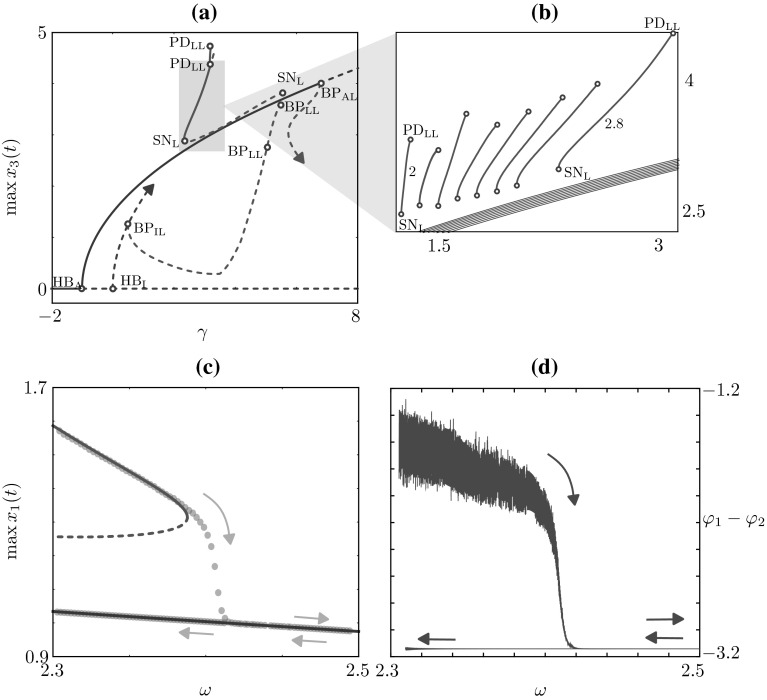Fig. 11.
Bistability and hysteresis between anti-phase and phase-locked solutions. a The in-phase branch (blue) undergoes a symmetry-breaking bifurcation () and the resulting unstable phase-locked branch, featuring two further symmetry-breaking bifurcations (), restabilises at a saddle-node bifurcation, before a period-doubling cascade takes place. A stable portion of the phase-locked branch (solid green line between and ) coexists with the anti-phase branch originating at (solid red branch). Parameters: , , , , . b We repeat the experiment for and plot stable branches to highlight the bistability region. c is varied by continuation and by quasi-static sweeps in direct numerical simulations (blue dots), for ; the time simulation follows the phase-locked branch up to the saddle node at , where an abrupt and hysteretic transition to an anti-phase solution is observed. d Phase lag during numerical simulation in c (colour figure online)

